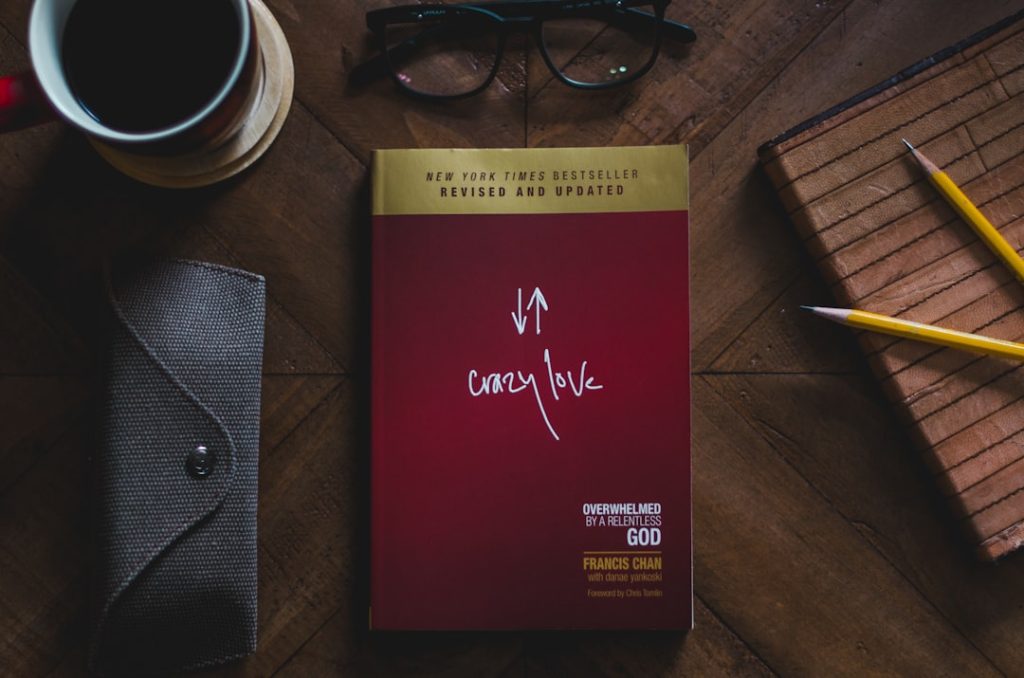
Self-publishing on Amazon has revolutionized the way authors bring their work to the market. The platform, primarily known for its vast selection of books, has become a powerful tool for independent writers seeking to bypass traditional publishing routes. With Amazon Kindle Direct Publishing (KDP), authors can publish their eBooks and paperbacks with relative ease, gaining access to a global audience without the need for an agent or a publishing house.
This democratization of publishing has opened doors for countless writers, allowing them to share their stories and expertise with readers around the world. The self-publishing process on Amazon is straightforward yet requires careful consideration. Authors must navigate various aspects, from manuscript preparation to marketing strategies.
Understanding the nuances of the platform is crucial for success. For instance, KDP offers options for both eBook and paperback formats, each with its own set of requirements and best practices. Additionally, authors must familiarize themselves with Amazon’s guidelines regarding content, cover design, and pricing to ensure their work meets the platform’s standards.
By grasping these elements, writers can effectively position their books in a competitive marketplace.
Key Takeaways
- Self-publishing on Amazon allows authors to have full control over their work and reach a global audience.
- A compelling book cover and description are essential for grabbing the attention of potential readers.
- Properly formatting your manuscript for Amazon ensures a professional and polished final product.
- Setting the right price for your book involves considering factors such as genre, length, and competition.
- Utilizing keywords and categories effectively can increase the visibility of your book to potential readers.
Creating a Compelling Book Cover and Description
Creating a Captivating Book Cover
A well-designed book cover serves not only as a visual representation of the content but also as a marketing tool that can significantly influence purchasing decisions. Authors should consider hiring a professional designer or utilizing design software to create a cover that reflects the genre and tone of their work. For example, a thriller novel might feature dark colors and bold typography, while a romance novel could employ softer hues and elegant fonts.
Writing a Compelling Book Description
Equally important is the book description, which acts as a sales pitch to entice readers. A compelling description should succinctly convey the essence of the book while highlighting its unique selling points. Authors should aim to create an engaging narrative that draws readers in, using persuasive language and vivid imagery. Incorporating keywords relevant to the genre can also enhance discoverability on Amazon’s platform.
Standing Out in a Crowded Marketplace
Crafting both an eye-catching cover and an enticing description is essential for standing out in a crowded marketplace. By investing time and effort into creating a professional-looking cover and a compelling description, authors can increase their chances of attracting potential readers and ultimately driving sales.
Formatting Your Manuscript for Amazon

Proper formatting is a critical step in the self-publishing process that can significantly impact the reader’s experience. Amazon has specific formatting guidelines for both eBooks and print books that authors must adhere to in order to ensure their work is presented professionally. For eBooks, this often involves converting the manuscript into a compatible format such as MOBI or EPUB, which allows for reflowable text that adjusts to different screen sizes.
Authors should pay attention to elements such as font choice, paragraph spacing, and chapter headings to create a polished final product. For print books, formatting involves additional considerations such as trim size, margins, and bleed settings. Authors must decide on the physical dimensions of their book and ensure that their manuscript aligns with these specifications.
Tools like Kindle Create or Scrivener can assist in this process by providing templates that simplify formatting tasks. Additionally, authors should conduct thorough proofreading and review their formatted manuscript on various devices to catch any errors or inconsistencies before publication. A well-formatted book not only enhances readability but also reflects professionalism, which can influence reader reviews and overall sales.
Setting the Right Price for Your Book
| Factors | Metrics |
|---|---|
| Costs | Printing, distribution, marketing |
| Competitor Analysis | Similar book prices, market trends |
| Target Audience | Demographics, purchasing power |
| Value Proposition | Unique selling points, quality |
| Profit Margin | Desired percentage, break-even point |
Determining the right price for a self-published book is a nuanced decision that can significantly affect sales performance. Authors must consider various factors when setting their prices, including production costs, market trends, and perceived value. Amazon allows authors to choose between two royalty options: 35% or 70%.
The 70% royalty option is available for eBooks priced between $2.99 and $9.99, making it an attractive choice for many authors aiming to maximize their earnings. Market research plays a crucial role in pricing strategy. Authors should analyze similar titles within their genre to gauge competitive pricing.
For instance, if most comparable eBooks are priced at $4.99, setting a price significantly higher or lower could deter potential buyers. Additionally, authors may experiment with promotional pricing strategies, such as offering limited-time discounts or free promotions during launch periods to generate buzz and attract initial readers. Ultimately, finding the right balance between affordability and perceived value is key to driving sales while ensuring fair compensation for the author’s work.
Utilizing Keywords and Categories to Increase Visibility
In the vast sea of self-published books on Amazon, visibility is paramount for attracting readers. One effective way to enhance discoverability is through strategic use of keywords and categories during the publishing process. Keywords are specific terms or phrases that potential readers might use when searching for books in their area of interest.
Authors should conduct thorough keyword research to identify relevant terms that align with their book’s content and genre. Amazon allows authors to select up to seven keywords when publishing their book, which can significantly impact search results. For example, if an author writes a historical fiction novel set in World War II, they might choose keywords like “WWII historical fiction,” “war stories,” or “historical romance.
By strategically selecting keywords and categories that accurately represent their work, authors can improve their chances of appearing in search results and reaching their target audience.
Promoting Your Book on Amazon and Beyond

Utilizing Amazon’s Promotional Tools
One popular option is Kindle Countdown Deals, which allows authors to offer limited-time discounts while still earning royalties based on the original price. This creates urgency among potential buyers and can lead to increased sales during the promotional period.
Exploring External Marketing Strategies
Beyond Amazon’s internal tools, authors should also explore external marketing strategies to broaden their reach. Social media platforms like Facebook, Instagram, and Twitter provide opportunities for authors to connect with readers and share updates about their work.
Building an Online Presence
Building an author website or blog can serve as a central hub for promoting books, sharing insights about writing processes, and engaging with fans. Additionally, participating in online communities such as Goodreads or relevant forums can help authors connect with like-minded individuals and potential readers who share an interest in their genre.
Understanding Amazon’s Royalty System
Navigating Amazon’s royalty system is crucial for self-published authors aiming to maximize their earnings from book sales. As mentioned earlier, authors have the option to choose between two royalty structures: 35% or 70%. The 70% royalty option is particularly appealing because it allows authors to earn more per sale; however, it comes with specific requirements regarding pricing and distribution.
For eBooks priced between $2.99 and $9.99, authors can earn 70% of the sale price after deducting delivery costs based on file size. Conversely, books priced outside this range will earn only 35% royalties regardless of sales volume. Understanding these nuances helps authors make informed decisions about pricing strategies while keeping profitability in mind.
Additionally, it’s important for authors to be aware of how returns are handled; if a reader returns an eBook within seven days of purchase, the author will lose the royalty earned from that sale.
Leveraging Amazon’s Author Central for Success
Amazon’s Author Central is a powerful tool that allows authors to manage their presence on the platform effectively. By creating an Author Central account, writers can claim their author page, which serves as a dedicated space for showcasing their books and connecting with readers. This page can include a biography, photos, links to social media profiles, and even blog posts related to writing or book themes.
One of the key benefits of Author Central is its ability to provide valuable insights into book performance through sales data and reader reviews. Authors can track how their books are performing over time and adjust their marketing strategies accordingly based on this information. Furthermore, engaging with readers through Author Central by responding to reviews or sharing updates can foster a sense of community around an author’s work.
By leveraging this platform effectively, authors can enhance their visibility on Amazon while building lasting relationships with their audience. In summary, self-publishing on Amazon presents both opportunities and challenges for aspiring authors. By understanding the intricacies of the platform—from formatting manuscripts to promoting books—writers can navigate this landscape successfully and reach their target audience effectively.
If you are interested in self-publishing a book on Amazon, you may also want to check out this article on how to create and sell ebooks. This resource can provide valuable insights and tips on formatting, pricing, and marketing your digital publications. Self-publishing can be a rewarding experience, and having a comprehensive understanding of the process can help you achieve success in the competitive world of online publishing.
FAQs
What is self-publishing?
Self-publishing is the process of publishing a book or other written work without the involvement of a traditional publishing house or company. Authors take on the responsibility of editing, designing, and marketing their own work.
Why should I consider self-publishing on Amazon?
Self-publishing on Amazon allows authors to reach a wide audience of readers and have control over the publishing process. Amazon provides a platform for authors to easily upload and sell their books in both digital and print formats.
What are the steps to self-publishing a book on Amazon?
The steps to self-publishing a book on Amazon include creating an Amazon KDP (Kindle Direct Publishing) account, formatting your manuscript, designing a book cover, setting a price, and choosing distribution options.
Do I need an ISBN to self-publish on Amazon?
Amazon provides free ISBNs for both print and e-book formats through their KDP platform. Authors can also use their own ISBN if they have one.
How much does it cost to self-publish on Amazon?
It is free to self-publish on Amazon through their KDP platform. Authors can choose to purchase additional services, such as professional editing or cover design, at their own expense.
What royalties can I earn from self-publishing on Amazon?
Authors can earn up to 70% royalty on e-book sales and up to 60% royalty on print book sales through Amazon KDP, depending on the pricing and distribution options chosen.
Can I publish my book in multiple formats on Amazon?
Yes, authors can publish their books in both e-book and print formats through Amazon KDP. They can also choose to enroll their e-books in Kindle Unlimited and Kindle Owners’ Lending Library programs.



